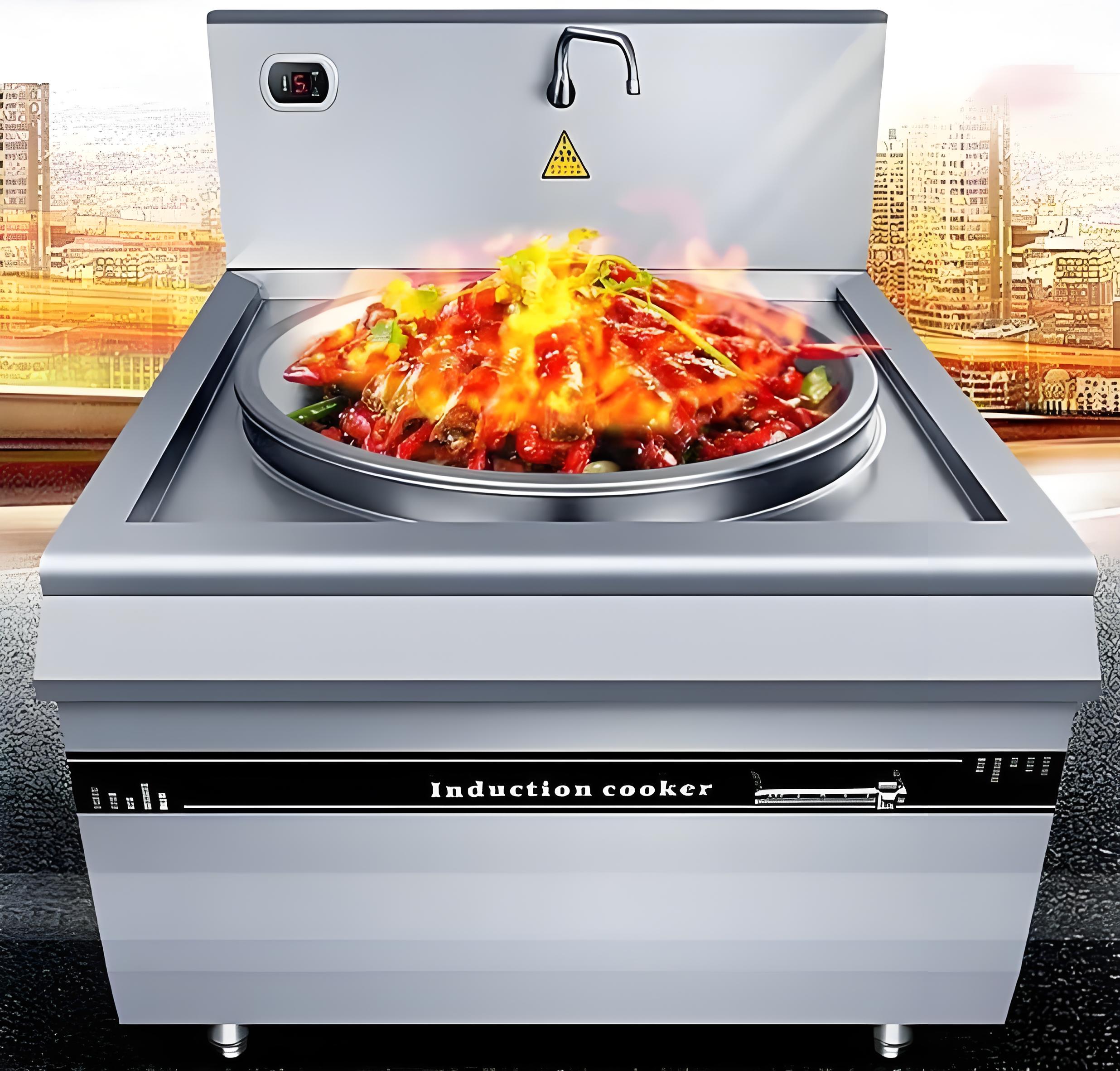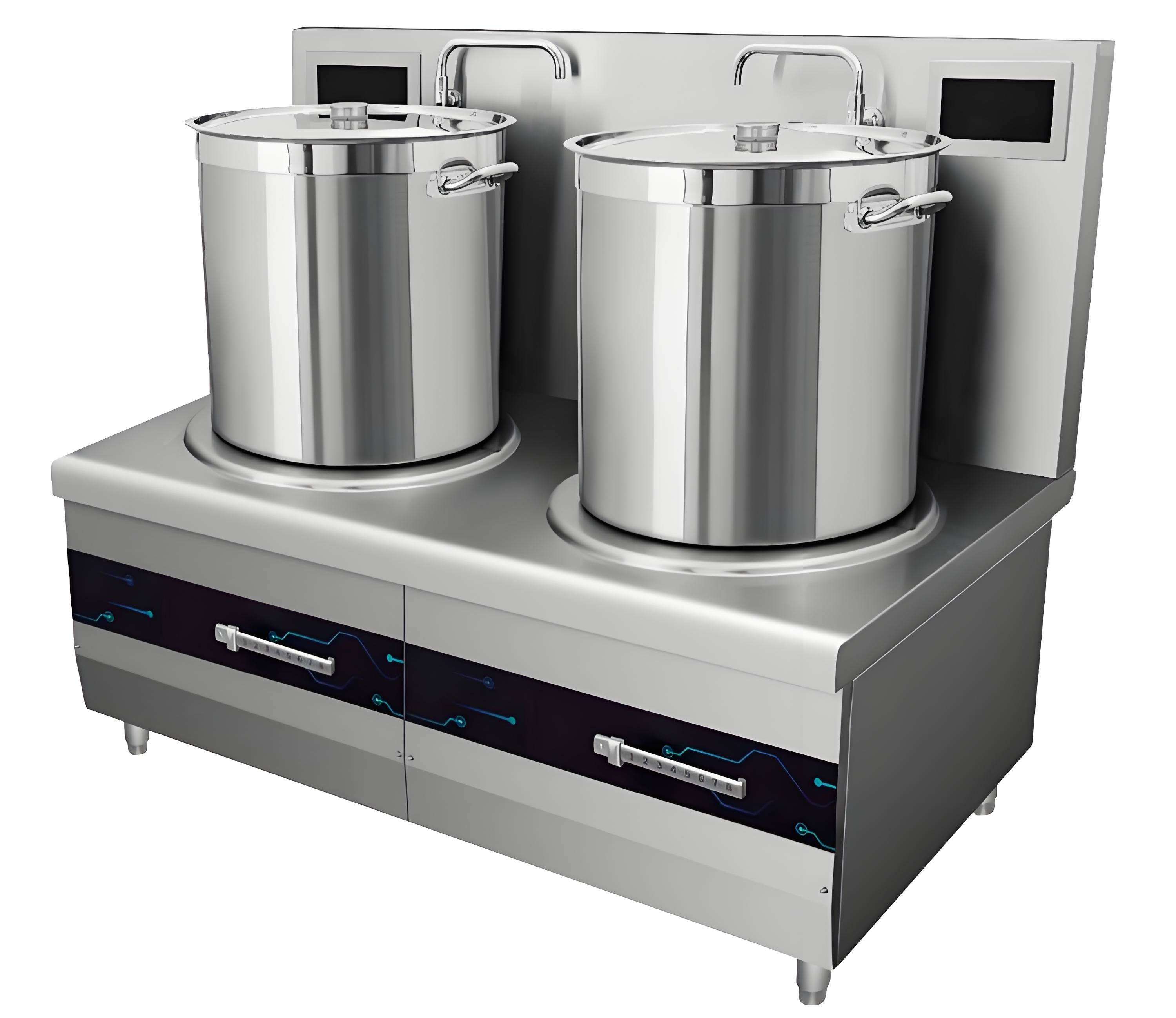As someone who’s been in the home appliance industry for over a decade, I’ve seen firsthand how induction cookers have transformed modern kitchens. Their speed, efficiency, and sleek design make them a favorite for home cooks and professionals alike. But with great power comes great responsibility—specifically, the responsibility to ensure your electrical setup can handle a high-power induction cooker. If you’re considering installing one or troubleshooting issues, you’re likely wondering: What kind of electrical wiring does a high-power induction cooker need? Let’s dive into the details, from circuit requirements to safety considerations, to help you set up your kitchen for success.

Why Electrical Requirements Matter
High-power induction cookers, typically rated above 2000 watts, are energy-hungry appliances. Unlike traditional gas stoves or low-power electric cooktops, these units demand a robust electrical system to operate safely and efficiently. A poorly configured circuit can lead to tripped breakers, appliance damage, or even fire hazards. Over the years, I’ve helped countless homeowners and small restaurant owners navigate these challenges, and I’m here to share that expertise with you.
The key is understanding your cooker’s power rating, your home’s electrical capacity, and the local regulations governing installations. Whether you’re upgrading your kitchen or troubleshooting an existing setup, getting the wiring right is non-negotiable.
Understanding Power Ratings of Induction Cookers
Induction cookers come in various power ratings, typically ranging from 1200W for portable single-burner models to 7000W or more for multi-burner professional units. High-power models, which we’re focusing on here, often exceed 3000W and are common in households or commercial kitchens that need fast, heavy-duty cooking.
To put this in perspective, a 3500W induction cooker operating at 220V draws about 16 amps of current (calculated as Power = Voltage × Current). This is significantly higher than, say, a microwave or toaster. If your electrical system isn’t designed to handle this load, you’ll run into issues like frequent tripping or overheating wires.

Key Electrical Terms to Know
Before we get into the specifics, let’s clarify a few terms I’ve found confuse many first-time buyers:
Voltage (V): Most high-power induction cookers in residential settings operate at 220–240V, though some regions (like parts of the U.S.) may use 208V for certain setups.
Amperage (A): This measures the current the appliance draws. Higher wattage means higher amperage, requiring thicker wires and stronger circuits.
Wattage (W): The total power the cooker consumes. Check the appliance’s label or manual for this figure.
Dedicated Circuit: A circuit exclusively for the induction cooker, ensuring no other appliances share the load.
Electrical Requirements for High-Power Induction Cookers
To ensure your induction cooker runs smoothly, your electrical setup must meet specific criteria. Here’s what I’ve learned from years of working with electricians and manufacturers:
1. Dedicated Circuit
A high-power induction cooker must have its own dedicated circuit. This means no other appliances—like your fridge, microwave, or dishwasher—should share the same circuit. Why? Because a 3500W cooker alone can max out a standard 20-amp circuit, leaving no room for additional loads. Sharing circuits risks overloading, which can cause breakers to trip or wires to overheat.
In my experience, I’ve seen homeowners try to plug high-power cookers into shared circuits, only to deal with constant power interruptions. A dedicated circuit, typically rated at 30–40 amps for most high-power models, ensures stable performance.

2. Voltage Compatibility
Most high-power induction cookers require 220–240V power, which is standard in many countries like those in Europe, Asia, and Australia. In the U.S., you’ll need a 240V circuit (or occasionally 208V in some apartment complexes). Always check your cooker’s voltage requirements in the manual.
If your home only has 120V outlets, you’ll need an electrician to install a 240V line. This was a common issue I encountered when helping clients upgrade from gas to induction. The process involves running new wiring from your electrical panel to the kitchen, which can cost $500–$1500 depending on your home’s layout.
3. Wire Gauge and Circuit Breaker
The wire gauge (thickness) and circuit breaker rating depend on the cooker’s amperage. Here’s a quick reference table based on my experience and standard electrical codes:
| Power Rating (W) | Amperage (A) | Wire Gauge (AWG) | Breaker Size (A) |
|---|---|---|---|
| 2000–3000W | 9–14A | 12 AWG | 20A |
| 3000–4500W | 14–20A | 10 AWG | 30A |
| 4500–7000W | 20–32A | 8 AWG | 40A |
Note: These values assume copper wiring and a 240V circuit. Always consult a licensed electrician to confirm requirements, as aluminum wiring or longer cable runs may need adjustments.
Thicker wires (lower AWG numbers) handle higher currents without overheating. For example, a 6000W induction cooker drawing 25 amps needs 8 AWG copper wire and a 40A breaker. Skimping on wire size is a recipe for disaster—I’ve seen melted outlets from undersized wiring.
4. Outlet and Plug Type
High-power induction cookers typically use specific outlets, such as the NEMA 14-30 or NEMA 14-50 in the U.S., designed for 240V appliances. These are four-prong outlets that include two hot wires, a neutral, and a ground for safety. Older homes might have three-prong outlets, which aren’t code-compliant anymore. If you’re in this situation, budget for an outlet upgrade.
In other countries, the outlet type varies. For instance, in Europe, you might need a CEE 7/4 (Schuko) or a dedicated hardwired connection for commercial-grade cookers. Always match the plug to the cooker’s specifications.

5. Grounding and Safety Features
Proper grounding is critical to prevent electric shocks. Induction cookers should be connected to a grounded outlet or hardwired with a ground wire. Additionally, modern electrical codes often require Ground Fault Circuit Interrupter (GFCI) breakers for kitchen circuits, especially in wet environments. I’ve worked with electricians who recommend GFCI protection for added safety, though it’s not always mandatory for induction cookers.
Another safety feature to consider is an Arc Fault Circuit Interrupter (AFCI) breaker, which detects electrical arcs that could start fires. Check your local codes, as requirements vary by region.
Installation Considerations
Installing a high-power induction cooker isn’t a DIY project unless you’re a certified electrician. Here’s what I’ve learned from overseeing countless installations:
1. Hire a Licensed Electrician
A professional electrician will assess your home’s electrical panel, calculate the load, and ensure the circuit meets local codes (like the National Electrical Code in the U.S.). They’ll also check if your panel has enough capacity. For example, a 200-amp panel can handle multiple high-power appliances, but an older 100-amp panel might need an upgrade.
2. Panel Capacity
Your electrical panel must have enough spare capacity to support the new circuit. A 3500W cooker on a 30A circuit adds significant load. If your panel is maxed out, you may need a subpanel or a full upgrade, which can cost $1000–$3000. I once helped a client in an older home who needed a panel upgrade to accommodate a new induction range—it wasn’t cheap, but it ensured safe operation.
3. Hardwired vs. Plug-In
Some high-power induction cookers are hardwired directly into the electrical system, while others use a plug-in connection. Hardwired setups are common for built-in ranges and commercial units, offering a cleaner look and potentially better reliability. Plug-in models are more flexible but require a compatible outlet. Check your cooker’s installation manual for guidance.
4. Local Electrical Codes
Electrical codes vary by country and region. In the U.S., the National Electrical Code (NEC) sets standards, while in Europe, IEC standards apply. For example, the NEC requires a dedicated circuit for fixed appliances like induction ranges. Always consult a local electrician familiar with these regulations.

Common Issues and Troubleshooting
Over the years, I’ve seen a few recurring problems when people install high-power induction cookers without proper planning:
Frequent Breaker Trips: This usually means the circuit is overloaded or shared with other appliances. Solution: Install a dedicated circuit with the correct breaker size.
Overheating Outlets: Undersized wires or loose connections can cause outlets to heat up. Solution: Use the correct wire gauge and ensure tight connections.
Voltage Mismatch: Plugging a 240V cooker into a 120V outlet won’t work and may damage the appliance. Solution: Verify voltage compatibility before installation.
Inadequate Panel Capacity: If your panel can’t handle the load, you’ll need an upgrade. Solution: Have an electrician assess your panel’s capacity.
One memorable case involved a restaurant owner who kept tripping breakers during peak hours. After inspecting, we found the induction cooker was on a shared 20A circuit. Upgrading to a 40A dedicated circuit solved the issue, and the kitchen ran smoothly thereafter.
Energy Efficiency and Cost Considerations
High-power induction cookers are more energy-efficient than gas or traditional electric stoves, converting up to 90% of energy into heat compared to 40–70% for other methods. However, their high wattage means they can still rack up electricity costs. For example, running a 3500W cooker for an hour at $0.15 per kWh costs about $0.53. If you cook for 2 hours daily, that’s $32 monthly.
To save energy:
Use appropriately sized cookware to maximize efficiency.
Take advantage of residual heat to finish cooking.
Consider off-peak electricity rates if your utility offers them.

Practical Tips for Homeowners
Here are some actionable tips I’ve shared with clients over the years:
Check Your Manual: The manufacturer’s specifications will list exact voltage, amperage, and plug requirements.
Plan for Future Upgrades: If you’re renovating, install a 40A circuit even if your current cooker only needs 30A—it gives you flexibility for future appliances.
Test Before Heavy Use: After installation, run the cooker at full power for a short period to ensure the circuit holds.
Budget for Installation: Electrical work can cost $500–$2000 depending on complexity. Get multiple quotes from licensed electricians.
Conclusion
Setting up a high-power induction cooker is an exciting step toward a modern, efficient kitchen, but it requires careful planning. From ensuring a dedicated circuit to choosing the right wire gauge and breaker, every detail matters for safety and performance. My years in the industry have taught me that investing in proper electrical infrastructure upfront saves headaches—and potentially costly repairs—down the line. If you’re unsure about any aspect, don’t hesitate to consult a licensed electrician. With the right setup, your induction cooker will deliver fast, precise cooking for years to come.

Related Questions and Answers
Q: Can I plug a high-power induction cooker into a regular outlet?
A: No, most high-power induction cookers require a 220–240V outlet, not a standard 120V household outlet. You’ll likely need a dedicated 30A or 40A circuit with a compatible plug, like a NEMA 14-30 or 14-50 in the U.S.
Q: How much does it cost to install a circuit for an induction cooker?
A: Costs vary depending on your home’s wiring and location, but expect $500–$1500 for a new 240V circuit. If your electrical panel needs an upgrade, costs can rise to $1000–$3000.
Q: Can I use an extension cord for my induction cooker?
A: Never use an extension cord for a high-power induction cooker. They’re not designed to handle the high amperage and can overheat, posing a fire risk. Always use a properly rated outlet or hardwired connection.
Q: What happens if my electrical panel doesn’t have enough capacity?
A: If your panel is maxed out, you may need a subpanel or a full panel upgrade. A licensed electrician can assess your panel and recommend the best solution.
Q: Are there portable induction cookers that don’t need special wiring?
A: Yes, some portable induction cookers (typically under 2000W) can run on a standard 120V, 15A circuit. However, high-power models above 3000W require dedicated 240V circuits.



